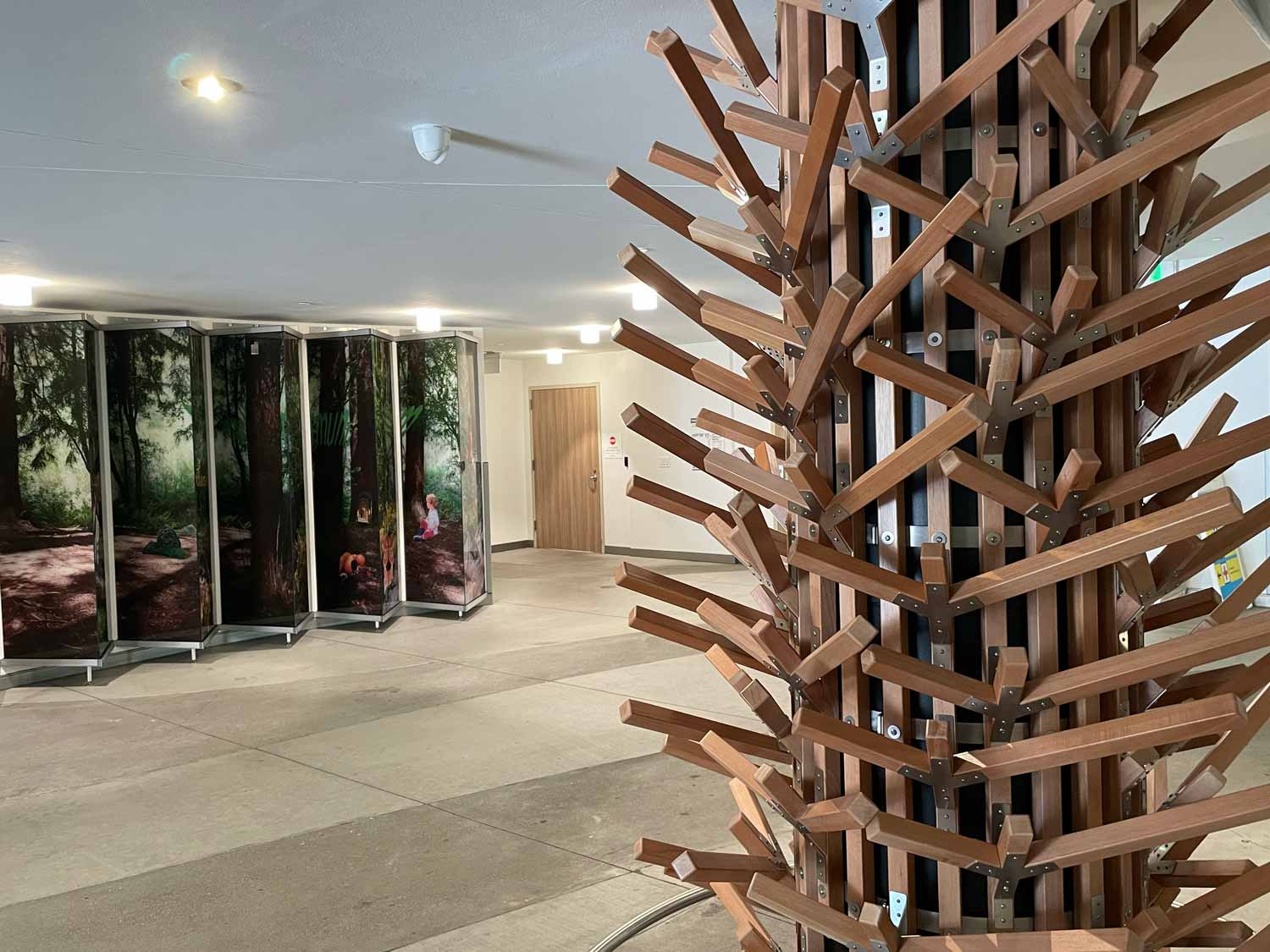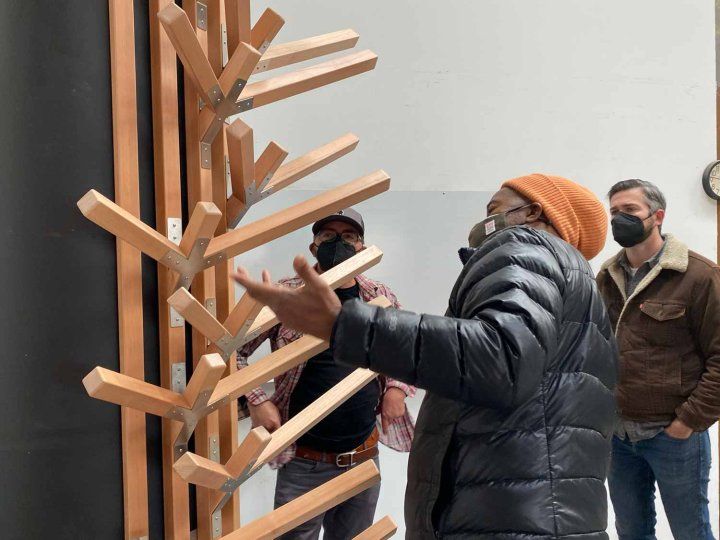UCSF Benioff Children's Hospital Oakland has debuted a new installation called The Grove by local artist Walter Hood. The piece is the first of several community art installations that are part of ongoing upgrades and expansions to the hospital.
The Grove will be many families' first welcome to UCSF Benioff Oakland, as they walk from the parking structure through a breezeway toward the main hospital entrance.
Hood has converted the breezeway into a magical redwood forest. As families make their way to the hospital, they pass a trio of support beams now transformed by Spanish cedar "branches" into a line of silvery trees. Opposite, large photographs of towering redwoods skirted by dewy ferns are printed on glass panels that line the nearly 60-foot-long corridor wall.
Through a mix of photography, collage and drawings, Hood brings this forestscape to life. Photos of real-life hospital patients are collaged throughout, as if children were playing in the woods. In the air surrounding them, wisps of wind carry the names of Californian plants in gold leaf. Whimsical castles and animals, inspired by found images, round out the woodland ecosystem.
In addition to Hood's installation, local artist Phillip Hua has also begun work slated to adorn the hospital's new standalone mental health services building. Both Hood and Hua's artwork were commissioned in accordance with Oakland municipal codes that require public art as a component of most new development projects in the city. UCSF Benioff Children's Hospitals is investing $1.5 billion to modernize and expand Oakland's children's hospital.

Naturally Oakland
A former UC Berkeley professor, Hood founded Hood Design Studio in Oakland where he serves as creative director. His previous works include Oakland's Splash Pad Park and south side Chicago's Bronzeville Lakefront in the city's heart of African American arts and culture.
When it came to redesigning the breezeway, Hood was a natural fit, said UCSF Benioff Children's Hospitals Vice President of Operations George Weiss. "Walter's work has a deep connection with Oakland's history and uses that to tell the story of its present," Weiss explained. "That connection and the commitment to equity within his works resonated with our values here at UCSF Benioff Children's Oakland."
Investing in local artists, Weiss added, is just one way UCSF Benioff Oakland works and grows with the community. The hospital treats about 40,000 children each year. As of 2022, more than 70% of children seen at the hospital are not privately insured. UCSF Benioff Oakland invested more than $81 million in community health in 2020 alone through free and low-cost care, food distribution, safety programs, mental health services and educational outreach.
'The Grove references past and present'
For Hood, many of his works seek to empower those that remain unseen or unrecognized. The Grove, he said, is no exception.

"A grove of redwood trees marks the busy intersection of Martin Luther King Jr. Way and 52nd Street outside Oakland's children's hospital," Hood said, "but the neighborhood once looked very different. Temescal Creek ran through what is now the hospital and MLK Jr. Way used to be known as Grove Street. Grove Street divided where minorities could and could not live or buy property in Oakland."
Hood concluded: "The Grove references both the past geographical and racial divisions of landscape and the present-day redwood grove outside the hospital, altogether creating a collective memory of neighborhood and nature."
Hood also drew inspiration from the children's hospital's Stay Healthy in Nature Everyday (SHINE) project. The project offers families free or low-cost ways to get out into East Bay parks. SHINE was developed based on years of research showing that exposure to nature can reduce stress levels, for instance. A 2018 study conducted among SHINE participants found that spending time in nature reduced stress and loneliness, and promoted exercise.
"For more than a century, UCSF Benioff Children's Hospital Oakland has been a safety net for the East Bay families, regardless of their ability to pay or where they come from," Weiss said. "Today, we are investing more than ever to ensure that we'll be here for another 100 years to serve the East Bay and California."






